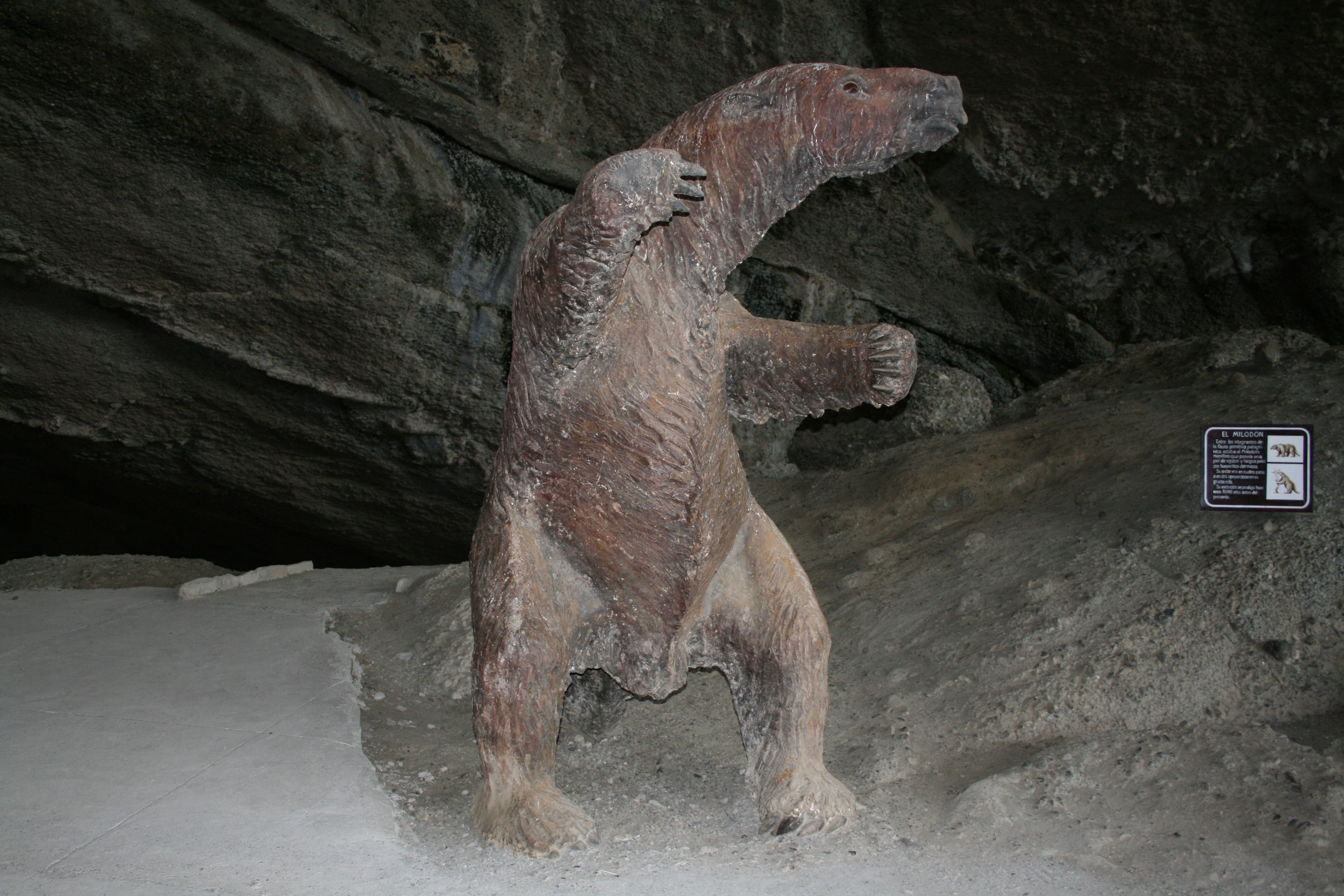Cuatro mamíferos gigantes extintos / Four Giant Extinct Mammals
Cuatro mamíferos gigantes extintos.
Four Giant Extinct Mammals.
- Antiguos animales que vivieron en nuestro planeta.
- Ancient animals that lived on our planet.
Cuando pensamos en animales gigantes extintos, es común que nuestra mente nos lleve automáticamente a los dinosaurios. Sin embargo, también existieron otros mamíferos prehistóricos impresionantes que compartieron el mundo con los humanos hace miles de años. A continuación, te presentamos cuatro ejemplos de estos colosos que alguna vez caminaron sobre la Tierra.
Panthera leo atrox: También conocido como león americano, con una altura de 1.25 metros y un peso de 360 kg, este imponente felino era un 25% más grande que el león africano que conocemos hoy en día. Los restos fósiles de este carnívoro han sido encontrados en América del Norte y sus características físicas lo colocan como una de las criaturas que se encontraban en la cima de la cadena alimentaria de su época (Biodiversidad mexicana, 2022).
Milodón: Este enorme animal herbívoro habitaba en la Patagonia. Tenía una altura de unos impresionantes 3.11 metros y llegaba a pesar alrededor de una tonelada, El Milodón se adaptaba a diferentes hábitats, desde la sabana hasta los bosques cálidos y era conocido por su pelaje grueso (Skorpios, n.d.).
Gigantopitecus: Se estima que medía entre 2 y 3 metros de altura y su alimentación se basaba principalmente en plantas y frutas. Hasta la fecha, este gran simio es considerado el primate más grande descubierto., era de costumbres herbívoras. Sus restos fósiles han sido hallados en zonas de Asia central y es un claro ejemplo de las maravillas que existieron en la antigüedad (Fischer, 2021).
Paraceratherium: Tenía una altura impresionante de 5 metros y alcanzaba un peso de aproximadamente 24 toneladas. Fue un antepasado de los rinocerontes y es el mamífero terrestre más grande encontrado hasta ahora. Sus restos fósiles han sido hallados principalmente en Asia y África, y su tamaño gigantesco lo hacía una presa temible. (Romero, 2021).
Estos fueron solo cuatro ejemplos de los muchos animales gigantes que existieron en el pasado y que vivieron en diversas partes del mundo. La extinción de estas especies es un recordatorio de la importancia de preservar y proteger la diversidad biológica que aún tenemos. Afortunadamente, a través del estudio y la investigación, podemos aprender más sobre estos grandes mamíferos y su legado en el mundo natural.
Panthera leo atrox Sergiodlarosa, CC BY-SA 3.0 <http://creativecommons.org/licenses/by-sa/3.0/>, via Wikimedia Commons | Milodón Diego Delso, CC BY-SA 3.0 <https://creativecommons.org/licenses/by-sa/3.0>, via Wikimedia Commons |
| Gigantopitecus Concavenator, CC BY-SA 4.0 <https://creativecommons.org/licenses/by-sa/4.0>, via Wikimedia Commons | Paraceratherium Tim Bertelink, CC BY-SA 4.0 <https://creativecommons.org/licenses/by-sa/4.0>, via Wikimedia Commons |
When we think of giant extinct animals, it's common for our minds to automatically go to dinosaurs. However, there were also other impressive prehistoric mammals that shared the world with humans thousands of years ago. Here, we present four examples of these colossi that once walked the Earth.
Panthera leo atrox: Also known as the American lion, with a height of 1.25 meters and a weight of 360 kg, this imposing feline was 25% larger than the African lion we know today. Fossil remains of this carnivore have been found in North America, and its physical characteristics place it as one of the creatures that were at the top of the food chain of its time (Biodiversidad mexicana, 2022).
Mylodon: This enormous herbivorous animal inhabited Patagonia. It stood at an impressive 3.11 meters and weighed around one ton. The Mylodon adapted to different habitats, from the savanna to warm forests, and was known for its thick coat (Skorpios, n.d.).
Gigantopithecus: It is estimated to have stood between 2 and 3 meters tall and its diet was mainly based on plants and fruits. To date, this great ape is considered the largest primate ever discovered. Its fossil remains have been found in areas of central Asia and it is a clear example of the wonders that existed in antiquity (Fischer, 2021).
Paraceratherium: It stood at an impressive height of 5 meters and weighed approximately 24 tons. It was an ancestor of rhinoceroses and is the largest terrestrial mammal found so far. Its fossil remains have been found mainly in Asia and Africa, and its gigantic size made it a formidable prey (Romero, 2021).
These were just four examples of the many giant animals that existed in the past and lived in various parts of the world. The extinction of these species is a reminder of the importance of preserving and protecting the biological diversity we still have. Fortunately, through study and research, we can learn more about these great mammals and their legacy in the natural world.
Referencias / References:
Biodiversidad mexicana. (2022). León Americano. https://www.biodiversidad.gob.mx/biodiversidad/EdHielo/leonAmericano
Fischer, A. (2023). Así era el Gigantopithecus, el gorila gigante de tres metros que desapareció hace 300 mil años. National Geographic en español. https://www.ngenespanol.com/animales/asi-era-el-gigantopithecus-el-gorila-gigante-de-tres-metros-que-desaparecio-hace-300-mil-anos/
Romero, S. (2021). El fósil de un rinoceronte gigante resulta ser el mamífero terrestre más grande que jamás haya existido. Muy Interesante. https://www.muyinteresante.es/ciencia/29188.html
Skorpios. (n.d.). Milodón: el mamífero prehistórico que gobernó la Patagonia. https://www.skorpios.cl/blog/milodon-mamifero-prehistorico-goberno-la-patagonia/
Cómo citar este artículo:
Nocetti, F.A. (2023). Cuatro mamíferos gigantes extintos. NabbuBlog. http://nabbublog.blogspot.com/2023/07/cuatro-mamiferos-gigantes-extintos-four.html
How to cite this article:
Nocetti, F.A. (2023). Ancient animals that lived on our planet. NabbuBlog. http://nabbublog.blogspot.com/2023/07/cuatro-mamiferos-gigantes-extintos-four.html




